Enhancing Machine Learning Algorithms: Effective Strategies
Written on

Machine learning (ML) and deep learning (DL) algorithms are becoming increasingly prevalent in today's corporate landscape. The rise of these AI applications is driven by advancements in algorithms, affordable computing resources, and abundant data. From finance to healthcare, education to manufacturing, various industries are adopting tailored ML and DL solutions.
A significant challenge across these ML and DL initiatives is enhancing model performance. This article delves into strategies for refining machine learning models that utilize structured data (like time-series and categorization) and deep learning models that work with unstructured data (including text, images, and audio/video).
Importance of Data Structure
Before exploring modeling strategies, it’s crucial to acknowledge the significance of data—specifically, understanding what type of data is available. ML necessitates substantial amounts of data to function effectively, which must be organized in a way that algorithms can interpret. Proper data structures facilitate this organization, making machine learning feasible. In the absence of structured data, machine learning becomes exceedingly challenging.
Data can primarily be divided into two categories:
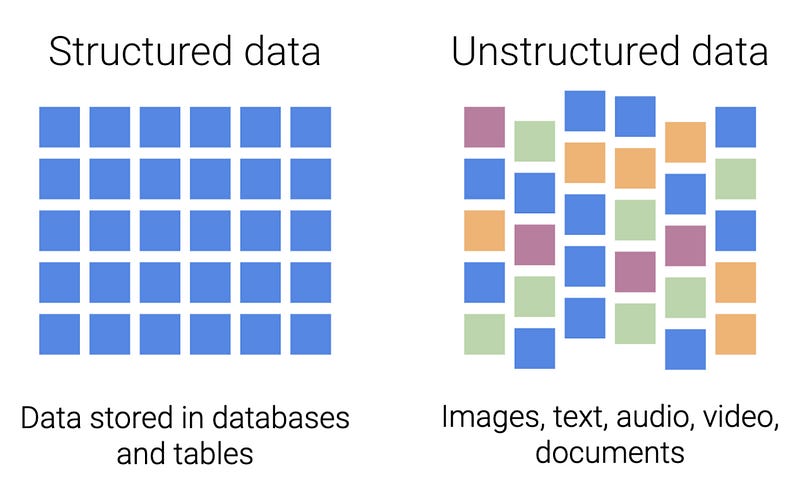
- Structured Data: This type is easier to analyze and process than unstructured data, typically formatted in a fixed structure that allows for straightforward information extraction. For instance, when predicting stock prices, data organized in tables or spreadsheets is advantageous and works best with supervised learning models.
- Unstructured Data: Although more complex, unstructured data can provide richer insights for predictions, capturing diverse information. For example, unstructured text data can reveal customer sentiments, which may be critical for predicting customer churn. This data type is more suited for unsupervised learning models.
Machine Learning Algorithms Cheat Sheet
Information in this section is sourced from SAS Blog for reference only.
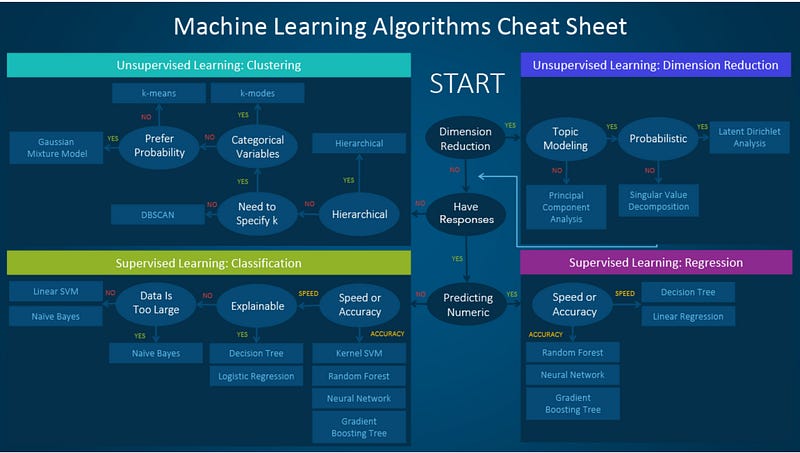
Using the Cheat Sheet
Interpret the algorithm chart as: "If <path label> then use <algorithm>." For example: - If dimension reduction is needed, opt for principal component analysis. - For quick numeric predictions, decision trees or linear regression are suitable. - For hierarchical outcomes, hierarchical clustering is recommended.
It's common for multiple paths to be relevant, and sometimes none may fit perfectly. These guidelines serve as general recommendations; many data scientists suggest experimenting with various algorithms to determine the optimal one.
Strategies for Enhancing ML Models — Structured Data
Several techniques exist for improving machine learning models that work with structured data. Common methods include:
- Feature Selection: Identifying and selecting the most relevant features can enhance model accuracy, reducing overfitting and boosting generalization.
- Feature Engineering: This process entails transforming or generating new features from existing ones to capture relationships within the data more effectively, such as modeling quadratic or cubic interactions.
- Model Selection and Tuning: Exploring different machine learning models (e.g., linear regression, decision trees, random forests) and adjusting hyperparameters (e.g., regularization strength, tree depth) can elevate model performance.
- Data Pre-processing: Techniques like imputation for missing values, outlier removal, and normalization/standardization can significantly enhance model accuracy.
Strategies for Enhancing ML Models — Unstructured Data
Various methods can also enhance machine learning models based on unstructured data:
- Using a Pre-trained Model: Leveraging models trained on extensive datasets, such as ImageNet, can boost the performance of models trained on smaller datasets.
- Incorporating More Data: The performance of a machine learning model improves with access to larger datasets, as this provides greater opportunities for learning and pattern recognition.
- Training Multiple Models: Instead of relying on a single model, training multiple models can yield better results, as each may learn different data aspects.
- Ensembling: This technique amalgamates predictions from various models to yield a more accurate result by averaging or voting on outcomes.
- Feature Engineering: Creating new features from existing data can enhance model performance.
- Model Tuning: Adjusting model hyperparameters to optimize performance can be achieved through methods like grid search or random search.
- Regularization: This technique mitigates overfitting by imposing constraints on the model, such as limiting parameter counts or adding penalties for larger values.
- Data Augmentation: Generating new data from existing datasets through methods like adding noise to images or altering text order can be beneficial.
- Transfer Learning: Learning from related tasks by pre-training a model on a large dataset and fine-tuning it on a smaller dataset is effective.
- Dimensionality Reduction: This technique decreases the number of features, simplifying data for easier analysis while enhancing algorithmic performance and reducing computational demands.
Strategies for Enhancing ML Models — Overall
To improve machine learning and deep learning models, consider the following strategies:
- Using More Data: More training data generally leads to higher accuracy.
- Data Preprocessing: This step is vital for cleaning data and reducing noise.
- Hyperparameter Tuning: Manually adjusting algorithm parameters can enhance model performance.
- Model Ensembles: Combining multiple models often results in superior performance compared to individual models.
- Normalization: Adjusting data ranges ensures better processing by algorithms.
- Standardization: Rescaling variables to a common scale facilitates model comparison.
- One-hot Encoding: This method transforms categorical variables into binary vectors.
- Understanding Errors: Awareness of model errors is crucial for rectifying inaccuracies and biases.
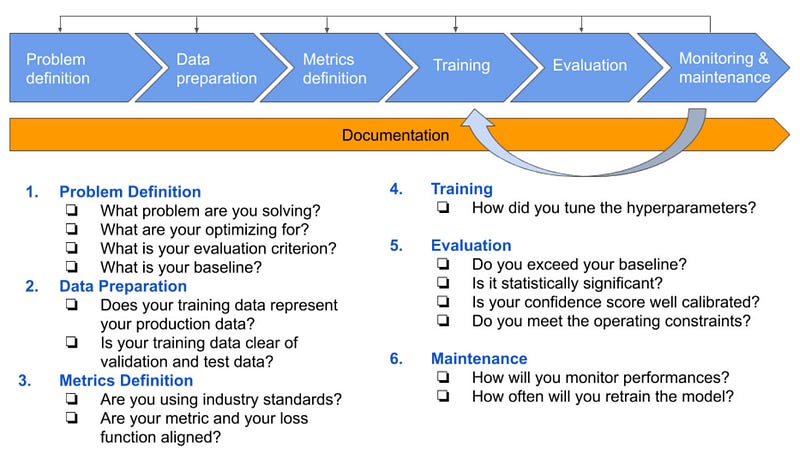
Normalization of Data
Normalization is an essential technique in machine learning that standardizes data for better algorithm processing. By reducing variability, normalized data becomes more predictable and manageable. Common methods include rescaling to fit values between 0 and 1 or standardizing to achieve a mean of 0 and a standard deviation of 1.
Importance of Normalization: Many algorithms assume normally distributed data; failure to normalize can hinder performance and make dataset comparisons challenging.
When to Normalize Data?
Normalization is particularly useful when data distribution is unknown or not Gaussian. It is especially relevant when working with algorithms that do not assume a specific distribution.
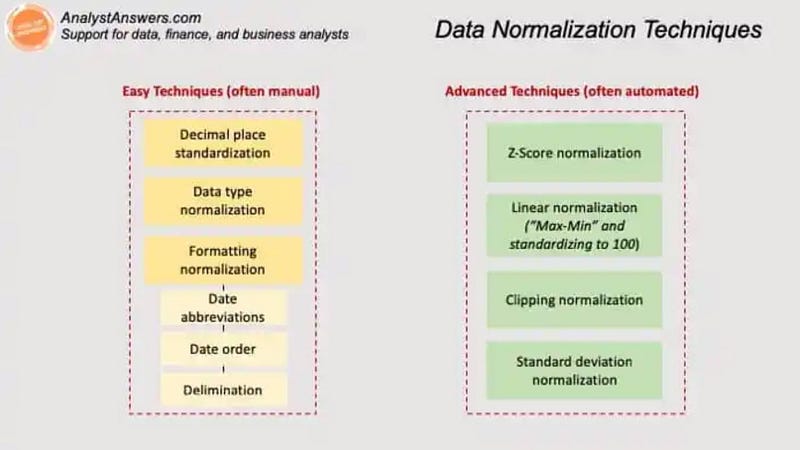
Normalization Techniques: 1. Rescaling: Values are adjusted to fall between 0 and 1 by subtracting the minimum and dividing by the range.
- Tip: Use rescaling to ensure values lie between 0 and 1.
- Standardization: Transforms data to have a mean of 0 and a standard deviation of 1 without binding values to a specific range.
- Tip: Opt for standardization to center data around 0.
- Min-Max Scaling: A specific type of rescaling that keeps minimum value at 0 and maximum at 1.
- Tip: Use min-max scaling when centering data around 0 isn't necessary.
- Principal Component Analysis (PCA): Reduces dimensionality by generating new features that are linear combinations of original ones.
- Tip: PCA is ideal for simplifying data.
- Z-Score Scaling: Similar to standardization, this method centers data with a mean of 0 and a standard deviation of 1.
- Tip: Z-score scaling is useful for standardizing without recalculating means and standard deviations.
The choice of normalization technique should align with your dataset's characteristics and intended outcomes. Normalizing data is critical for effective machine learning preprocessing, and neglecting this step may compromise algorithm performance.
Best Practices for ML Algorithms
Best practices for machine learning algorithm implementation vary by problem but generally include:
- Choosing the Right Algorithm: The effectiveness of your data heavily depends on selecting an appropriate algorithm.
- Data Preparation: Cleaning and enriching data is crucial for training accurate models.
- Preprocessing Data: Ensuring algorithms work with consistent data can enhance performance.
- Careful Model Training: Avoid overfitting by selecting suitable layers and parameters, using cross-validation for accuracy.
- Evaluating Results: Regularly assess your model's performance to refine algorithms.
- Tuning Models: Adjusting parameters post-configuration is essential for optimal results.
- Deploying Models: Implement your model for predictions or classifications to enhance performance.
- Retraining Models: Adapt your model over time as data evolves, either by restarting training or incrementally updating with new data.
Model Optimization
Optimizing machine learning models is crucial for enhancing accuracy, reducing training data requirements, and enabling efficient training. Model optimization helps identify the best settings for algorithms to perform well on new data.
Optimization Techniques: Various techniques, including grid search, random search, and Bayesian optimization, can be applied.

- Exhaustive Search: This brute-force method examines all potential hyperparameters but can be inefficient for extensive options.
- Gradient Descent: A popular approach for minimizing errors through iterative re-training, aiming to achieve the lowest error and enhance accuracy.

- Genetic Algorithms: This evolutionary approach evaluates model performance and combines successful models' parameters to produce new iterations, continuously refining the model.
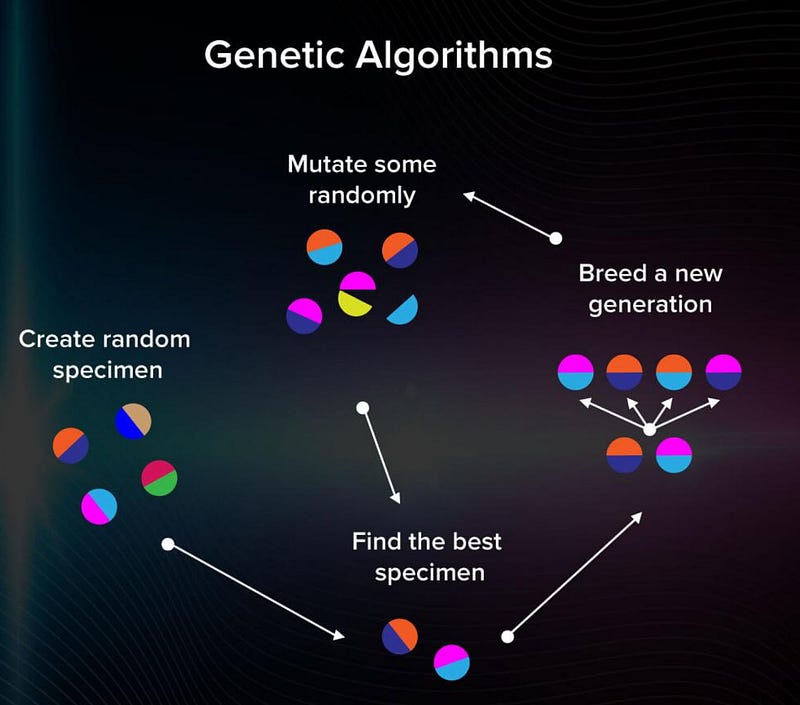
Conclusion
The fields of deep learning and machine learning demand extensive knowledge, access to well-labeled data, and adequate computational resources for effective model training and enhancement.
Improving machine learning models is a skill that can be developed by systematically addressing model shortcomings. This article outlines various strategies for model enhancement and optimization to achieve desired performance levels while minimizing data usage.
Thank you for reading! For more insights, feel free to follow my channels.

Disclaimer
Please exercise caution with the information provided. I am not a financial advisor and cannot predict personal or future circumstances. The insights shared are intended for educational purposes and may not apply universally. These strategies have proven beneficial in my experience, contributing to my professional success.
Join Coinmonks Telegram Channel and Youtube Channel to explore more about crypto trading and investing.
Also, Read
- Binance Futures Trading | 3Commas vs Mudrex vs eToro
- How to buy Monero | IDEX Review | BitKan Trading Bot
- CoinDCX Review | Crypto Margin Trading Exchanges
- Red Dog Casino Review | Swyftx Review | CoinGate Review
- Bookmap Review | 5 Best Crypto Exchanges in the USA